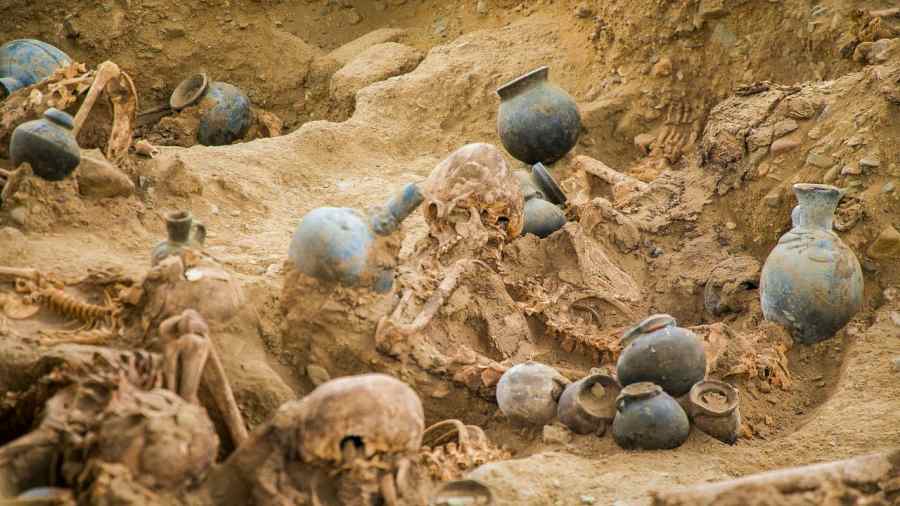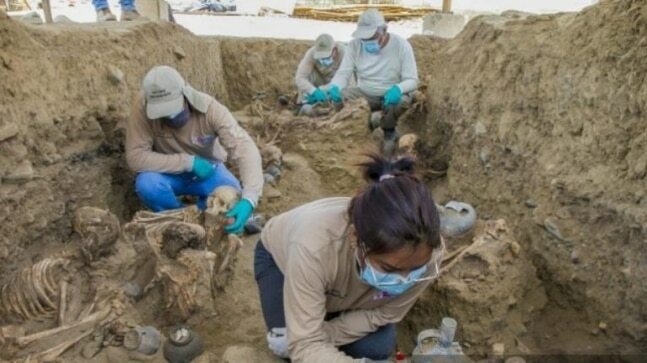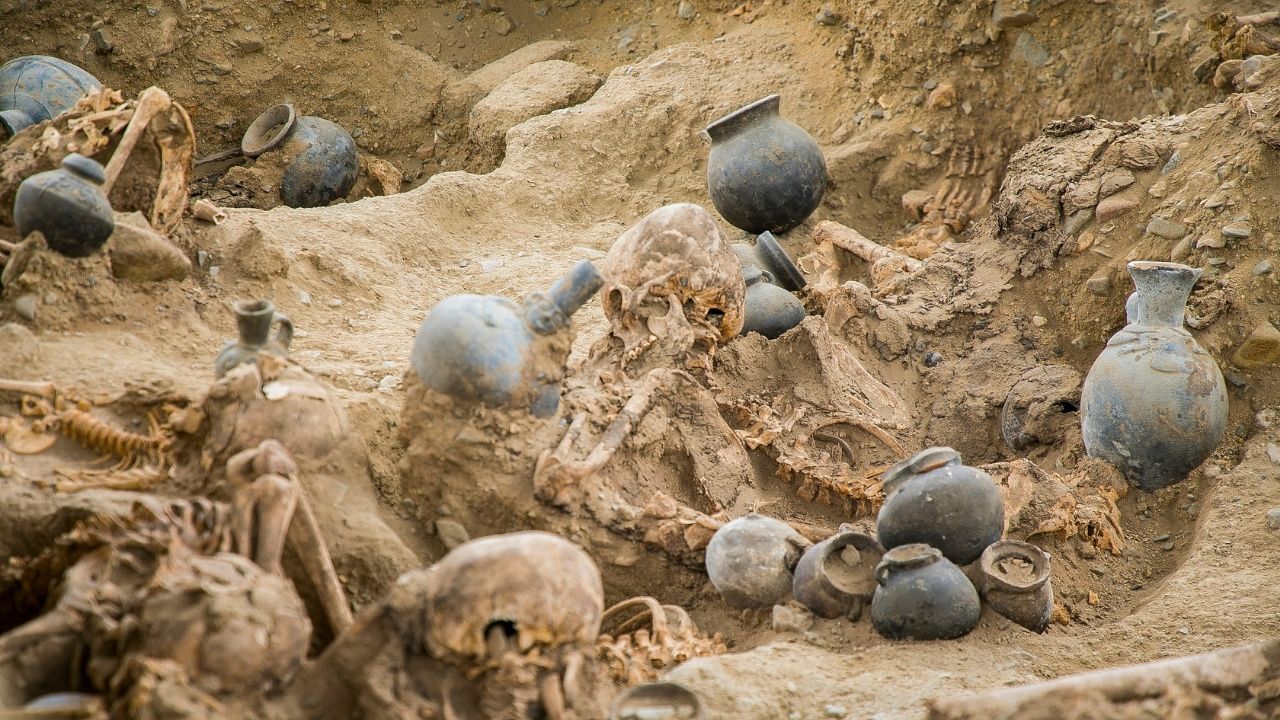Sat 13 November 2021:
In one medium-sized burial site in the ancient Peruvian city of Chan Chan, archaeologists discovered the skeletal remains of 25 people. The men, women, and children buried there belonged to Peru’s renowned Chim people, who developed a sophisticated society that lasted more than five centuries before surrendering to the Inca.
The remains were discovered in a small space measuring just 107 square feet, roughly 10 feet long and 10 feet wide, located inside what was once the capital of the Chimú empire that reached its height in the 15th century before falling to the Incas in 1470 AD.
The tomb was discovered about three weeks ago at Chan Chan, some 500 kilometers (310 miles) north of the capital Lima.
“Most of them (the remains) belonged to women under 30 who were buried with objects used in textile activities, a couple of children, and a couple of teenagers,” Jorge Meneses, the leader of most recent Chan Chan excavation, told the Peru News Agency – ANDINA . “It is a very specific population, not too young considering the average human lifespan was 40 years.”
Chan Chan was the capital of Chimor, the name for the Chimú kingdom that ruled the region in the pre-Incan era. The city was built around 850 AD along Peru’s northern seacoast, at a site not far from the modern-day city of Trujillo.
While lifeless and deserted now, Chan Chan is recognized as one of the most important archaeological sites in the Americas. It features 14 square miles (36 square kilometers) of ancient ruins left behind by the people of the kingdom of Chimor, which emerged around 900 AD and lasted until 1470 AD, when it was conquered by invading Incan armies.
The archaeologists found the grave while digging near the palace complex’s southern wall. The small burial chamber featured two levels of embankment, and overall there were approximately 70 vessels and related items found that would have been used in textile work
Based on the unusual location in which the skeletons were found, the archaeologists believe the small burial site was likely reserved as a resting spot for members of elite Chimú families (or perhaps one elite family)..
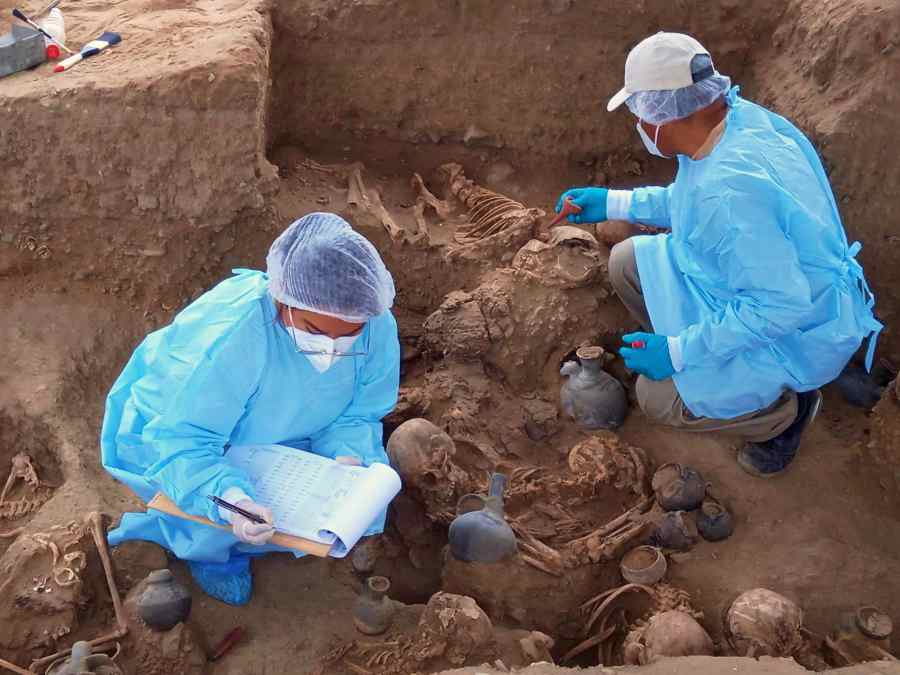
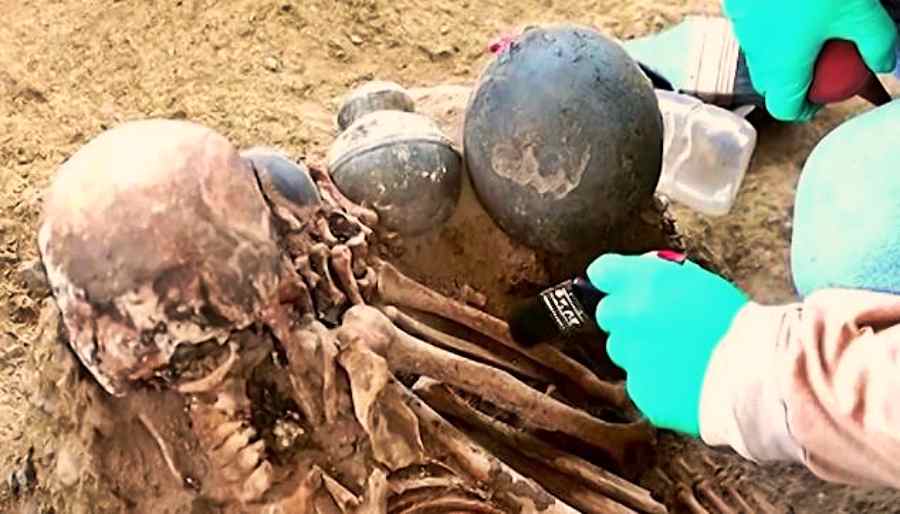
Even though there was some mixing of the bones, some effort was made to put the skeletons back together. The bodies were found wrapped in fabric and had been placed in a sitting position. This showed that the Chimú did take some care when burying their dead , Sinthya Cueva pointed out, perhaps in preparation for their entrance into the next world.
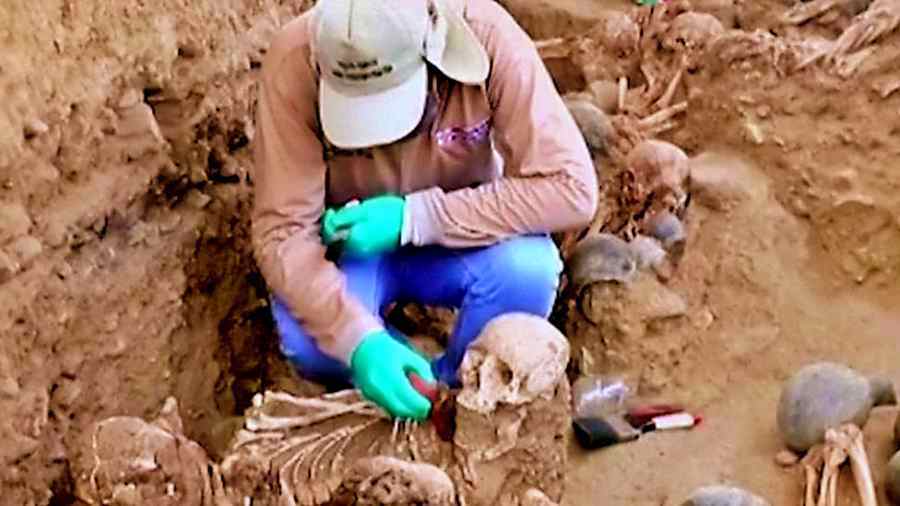
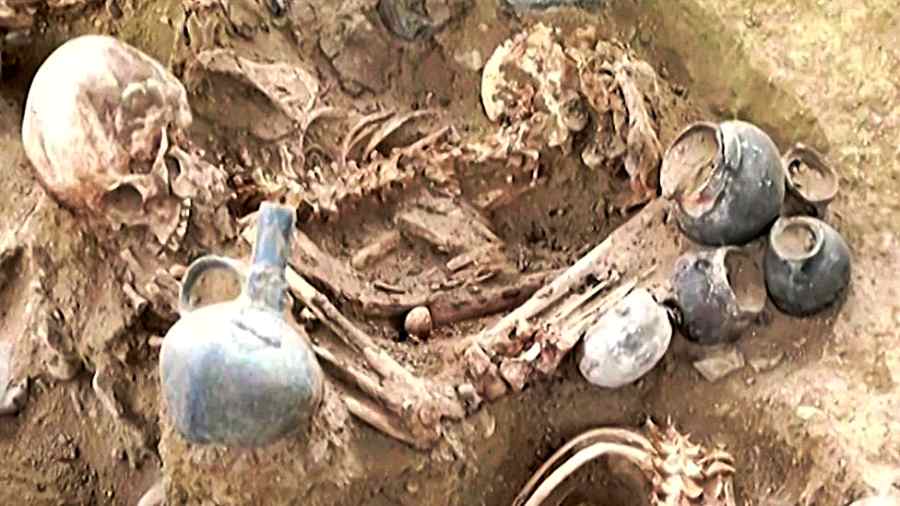
Chan Chan was a citadel of the Chimu culture, which flourished between the years 900 and 1450 on the north coast of Peru before falling to the Incas.
Chan Chan means “resplendent Sun” in the Chimu language.
The citadel was constructed in an area of some 20 square kilometers (7.7 square miles), had ten walled palaces and some 30,000 citizens at its height.
It was declared a World Heritage Site by UNESCO in 1986, but also on its list of World Heritage in Danger.
_____________________________________________________________________________
FOLLOW INDEPENDENT PRESS:
TWITTER (CLICK HERE)
https://twitter.com/IpIndependent
FACEBOOK (CLICK HERE)
https://web.facebook.com/ipindependent
Think your friends would be interested? Share this story!


